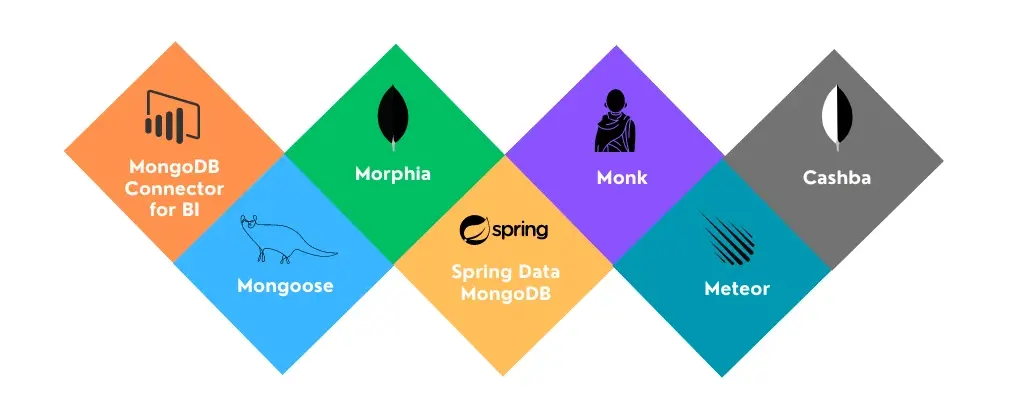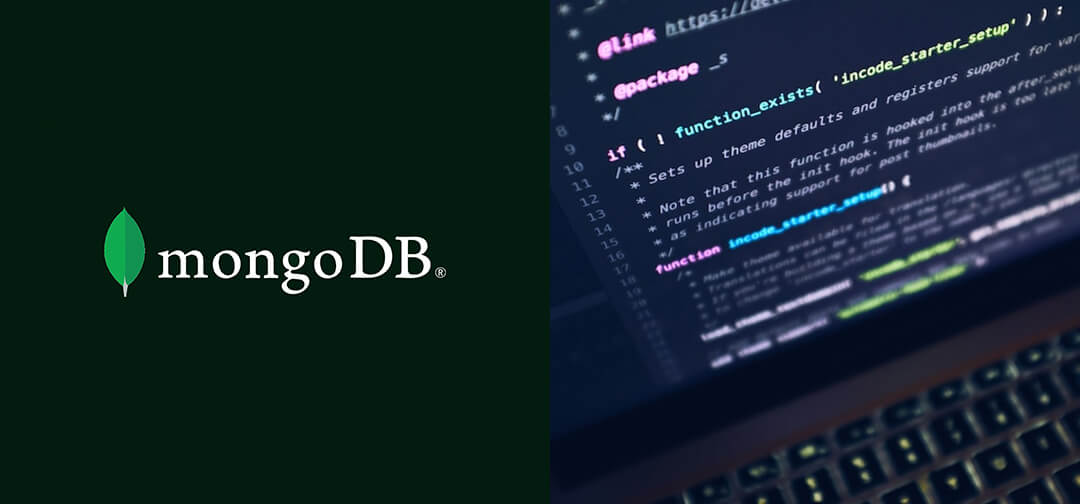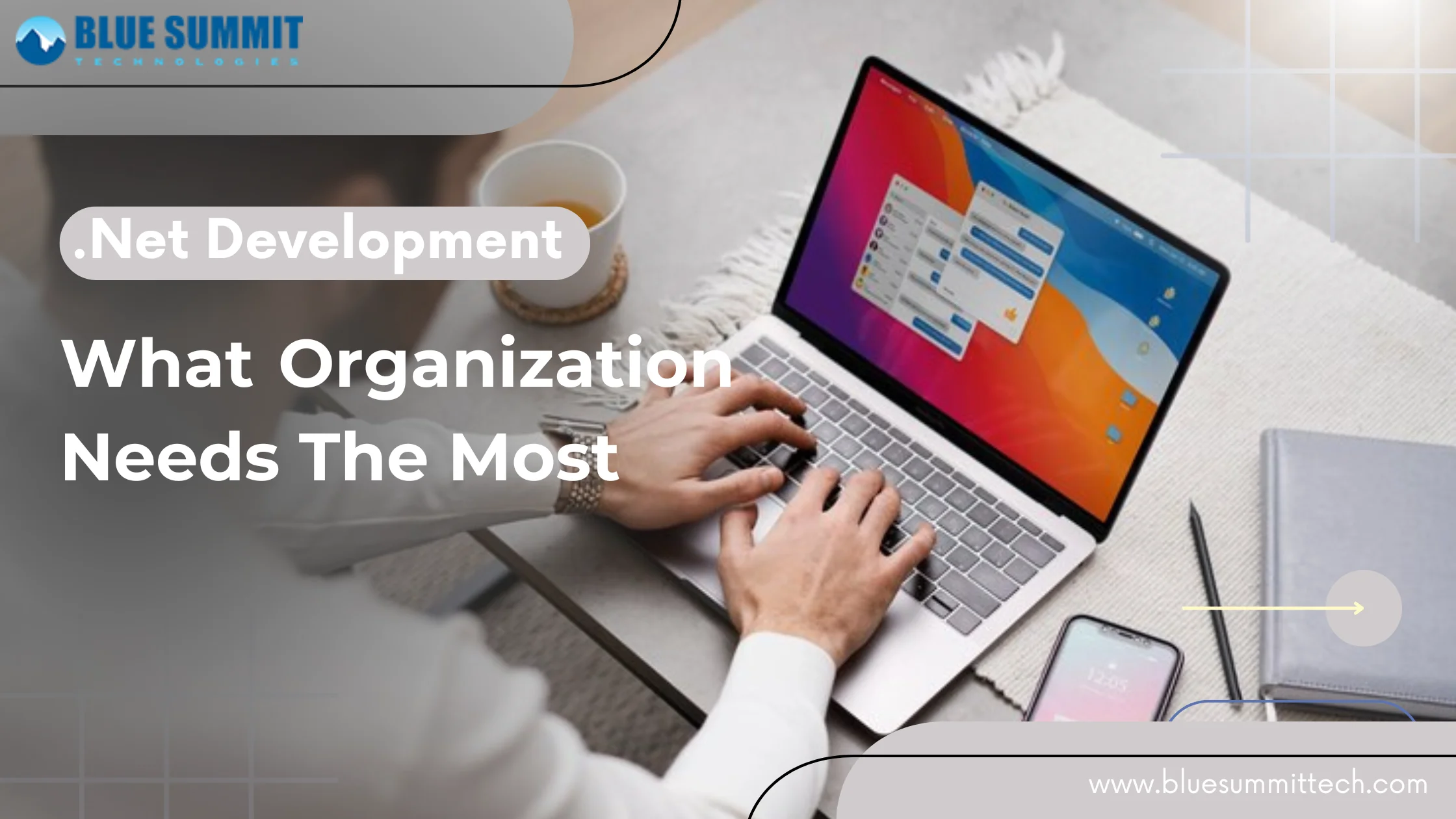
Posted on Monday, May 29th, 2023
From Relational to NoSQL: Why MongoDB is the Future of Data Storage
In the world of modern data management, traditional relational databases have faced limitations when handling the ever-growing complexity and scalability demands of today's applications. MongoDB, a NoSQL database, has emerged as a powerful and flexible solution to address these challenges. Unlike traditional relational databases, MongoDB does not rely on tables with fixed schemas. Instead, it uses a JSON-like format called BSON (Binary JSON) to store data in a flexible document structure.
What is MongoDB Development
MongoDB development refers to the process of designing, implementing, and maintaining applications that utilize MongoDB as their database management system. It involves leveraging it's features and capabilities to build robust, scalable and efficient applications.MongoDB development typically encompasses the following key aspects:
Data Modeling
The flexible document model allows developers to design data structures that align with the specific needs of their applications. This involves determining the collections and documents that will store the data and defining the fields and relationships within them. The goal is to create a data model that efficiently represents the application's data and supports the required operations and queries.CRUD Operations
It provides a comprehensive set of APIs and drivers for performing Create, Read, Update, and Delete (CRUD) operations on data. Developers utilize these APIs to interact with the database, insert new documents, retrieve data based on specified criteria, update existing documents, and delete data as needed. MongoDB's query language and APIs offer powerful functionality for querying and manipulating data.Indexing and Query Optimization
It allows for the creation of indexes on specific fields or combinations of fields to improve query performance. Developers analyze the application's query patterns and create appropriate indexes to ensure efficient data retrieval. Understanding how indexing works and optimizing queries can significantly enhance the overall performance of MongoDB-based applications.Aggregation and Analytics
This provides a robust aggregation framework that enables developers to perform complex data aggregations, transformations, and analytics operations. Aggregation pipelines allow for grouping, filtering, sorting, and combining data in various ways to generate meaningful insights. Developers leverage this framework to perform advanced analytics tasks and derive valuable information from the stored data.Scalability and Performance Optimization
Its architecture supports horizontal scaling through sharding, allowing applications to handle increased data volumes and high traffic loads. Developers design and implement sharding strategies to distribute data across multiple servers or clusters. Additionally, they optimize queries, index usage, and data retrieval patterns to maximize performance and ensure efficient utilization of MongoDB's resources.Integration and Tooling
It integrates seamlessly with popular programming languages, frameworks, and tools. Developers leverage MongoDB drivers and libraries available for various programming languages to interact with the database.Security and Data Governance
This provides a range of security features to protect data, including authentication, role-based access control, encryption, and auditing. Developers implement appropriate security measures to safeguard sensitive information and ensure compliance with data governance requirements.Why MongoDB Over Traditional Relational Databases
Below mentioned are some points as to what are the advantages of using MongoDB:The Limitations of Relational Databases
Relational databases have been the cornerstone of data storage for decades, but they come with certain limitations. Fixed schemas require upfront design decisions, making it challenging to accommodate changing business needs and evolving data structures. Scaling relational databases horizontally can be complex and expensive, limiting their ability to handle massive amounts of data and high traffic loads. Additionally, relational databases struggle with unstructured or semi-structured data, posing challenges in modern application development.MongoDB's Flexible Data Model
One of its most significant advantages lies in its flexible and schema-less data model. Unlike relational databases, this stores data in a document-oriented format called BSON (Binary JSON), allowing for dynamic and evolving schemas. This flexibility enables developers to iterate quickly, adapt to changing requirements, and store data without the constraints of predefined structures. It's document model also facilitates seamless integration with modern programming languages and frameworks, empowering developers to work with data in a natural and efficient manner.Scalability and Performance
As data volumes continue to skyrocket, scalability becomes a critical factor in data storage solutions. MongoDB shines in this area with its built-in horizontal scaling capabilities. By utilizing sharding, it distributes data across multiple servers or clusters, allowing for seamless scalability as datasets grow. Sharding enables efficient load balancing, parallel processing, and the ability to handle massive traffic loads without sacrificing performance. This scalability, combined with its efficient indexing and query optimization, ensures optimal performance even in the most demanding applications.Handling Unstructured and Semi-Structured Data
The rise of big data, IoT, and complex data structures necessitates a database solution that can handle unstructured and semi-structured data effectively. MongoDB excels in this regard, providing native support for unstructured data storage and flexible data models. Its ability to store and retrieve complex documents, hierarchical data, and arrays makes it an ideal choice for applications dealing with diverse data types. The query capabilities, including powerful aggregation and geospatial operations, further enhance its effectiveness in processing and analyzing unstructured data.High Availability and Fault Tolerance
Its architecture ensures high availability and fault tolerance, crucial aspects of modern data storage systems. By utilizing replica sets, it automatically replicates data across multiple nodes, providing redundancy and minimizing downtime. In the event of a primary node failure, a secondary node seamlessly takes over as the new primary, ensuring uninterrupted service. This robust replication mechanism guarantees data consistency and increases the overall resilience of the database infrastructure.Ecosystem and Community Support
It enjoys a vibrant and active community of developers and a robust ecosystem. Extensive documentation, tutorials, and forums are readily available, making it easy for developers to get started, seek guidance, and find solutions to common challenges. It's compatibility with popular programming languages, frameworks, and tools enhances its versatility and integration capabilities within existing technology stacks.Real-World MongoDB Use Cases
Its advantages have propelled its adoption across various industries and applications. It powers e-commerce platforms for managing product catalogs, handles user profiles and content in content management systems, supports mobile app backends for seamless data synchronization, and enables real-time analytics for data-driven decision-making. The versatility and scalability make it an ideal choice for industries such as finance, healthcare, logistics, and gaming, where flexible data management and high performance are paramount.Uses of MongoDB
MongoDB is used across a wide range of fields and industries due to its flexibility, scalability, and powerful features. Here are some of the fields where MongoDB is commonly utilized:i. E-commerce
It is employed in e-commerce platforms for managing product catalogs, inventory management, and user profiles. Its ability to handle large volumes of data and perform real-time product searches makes it a popular choice.ii. Content Management Systems (CMS)
Many CMS systems leverage MongoDB for storing and retrieving content, managing user-generated data, and enabling fast content delivery.iii. Mobile App Backends
MongoDB serves as a reliable backend database for mobile applications, enabling seamless synchronization, offline data storage, and efficient data retrieval for mobile app users.iv. Real-time Analytics
MongoDB is well-suited for real-time analytics applications, where it enables rapid data ingestion, processing, and analysis. Its ability to handle complex and dynamic data structures makes it ideal for real-time data streaming and analysis.v. Internet of Things (IoT)
It's flexibility and scalability make it a preferred choice for IoT applications. It can handle large volumes of sensor data, manage device configurations, and provide real-time insights for IoT platforms.vi. Healthcare
It is utilized in healthcare systems for managing patient records, medical data, and healthcare analytics. Its ability to handle unstructured and semi-structured data makes it suitable for storing medical images, lab results, and clinical documents.vii. Financial Services
It is deployed in the financial sector for various use cases, including customer data management, fraud detection, risk analysis, and regulatory compliance. Its scalability and high-performance capabilities ensure efficient processing of financial data.viii. Social Media
MongoDB is used in social media platforms for handling user-generated content, managing social graphs, and providing personalized recommendations. Its flexible data model allows for efficient storage and retrieval of dynamic social data.ix. Logistics and Supply Chain
It is applied in logistics and supply chain management systems for tracking and managing inventory, order fulfillment, and supply chain analytics. Its ability to handle high transaction volumes and complex data relationships is beneficial in this domain.x. Gaming
It is increasingly used in the gaming industry for storing game state data, managing player profiles, and enabling multiplayer interactions. Its scalability and real-time data capabilities support high-performance gaming experiences.Notable Frameworks of MongoDB

Various MongoDB Query Tools
These are just a few examples of the diverse fields where MongoDB finds significant application. Its versatility makes it a preferred choice in many industries that require flexibility, scalability, and efficient data management. MongoDB provides several query tools and interfaces that developers can use to interact with the database and execute queries. These tools offer various features and functionalities to simplify the querying process and enhance productivity. Here are some commonly used MongoDB query tools:1. MongoDB Shell (mongo)
This is a command-line interface that allows developers to interact with MongoDB using JavaScript-like syntax. It provides a powerful environment for executing queries, performing administrative tasks, and exploring the database. The shell supports auto-completion, syntax highlighting, and multi-line editing, making it a versatile tool for MongoDB query execution and administration.2. MongoDB Compass
This is a graphical user interface (GUI) tool that provides a visual interface for working with MongoDB databases. It offers a range of features, including query building, visual schema exploration, data visualization, and real-time performance analysis. MongoDB Compass simplifies the query creation process, allowing developers to construct queries using a point-and-click interface, without writing manual query statements.3. MongoDB Atlas Query Explorer
This is a fully managed cloud-based database service. The Query Explorer is a web-based interface available in the MongoDB Atlas dashboard. It allows users to execute queries directly on their Atlas-hosted databases. The Query Explorer provides a convenient way to interact with the database without the need to install any additional tools or interfaces.4. Third-Party GUI Tools
Several third-party graphical user interface (GUI) tools are available for its query execution. These tools provide a visual interface for connecting to MongoDB databases, managing data, and executing queries. Examples of popular third-party tools include Robo 3T (formerly Robomongo), Studio 3T, and NoSQLBooster. These tools offer advanced features such as query autocompletion, code snippets, and result visualization.5. Programming Language-Specific Drivers
This provides official drivers for various programming languages, including Python, Java, JavaScript, and C#. These drivers allow developers to interact with MongoDB programmatically from their preferred programming language. They provide APIs for executing queries, retrieving and manipulating data, and handling database operations. Developers can use these drivers to integrate MongoDB query execution within their application code.6. MongoDB Aggregation Framework
It offers a powerful aggregation framework for performing complex data analysis and transformation operations. It allows developers to perform operations like grouping, filtering, sorting, and transforming data within the database. The aggregation framework is primarily used for advanced analytics, data processing, and generating custom reports.These query tools and interfaces cater to different preferences and use cases, providing flexibility for developers to choose the most suitable tool for their MongoDB query needs.
Conclusion
As the demand for flexible and high-performance data storage solutions continues to grow, MongoDB's significance and adoption as the future of data storage are on the rise. By leveraging MongoDB's capabilities, developers can unlock the full potential of their applications, drive innovation, and make informed decisions based on real-time data analysis.At Blue Summit, we understand the complexities and challenges that arise during application development, particularly when it comes to data storage and management. Our MongoDB developers possess a deep understanding of MongoDB's features, ensuring that they can architect and develop strong solutions that align with your specific requirements.
Contact us today for further information.
Blue Summit has collaborated with OdiTek Solutions, a frontline custom software development company. It is trusted for its high service quality and delivery consistency. Visit our partner's page today and get your business streamlined.
REFER TO OTHER RELEVANT CONTENTS

MongoDB
Blue Summit places a high priority on client satisfaction while providing agile development services for mongodb. Blue Summit has put MongoDB solutions into use, either as stand-alone programs or in conjunction with conventional relational databases. We cover all facets of MongoDB development as well as...
read more








